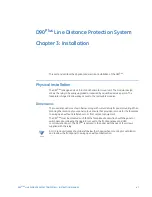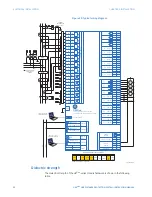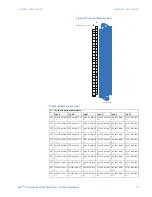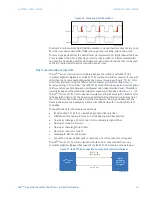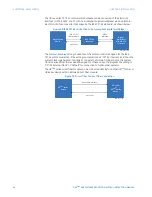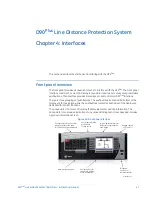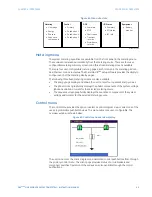
54
D90
PLUS
LINE DISTANCE PROTECTION SYSTEM – INSTRUCTION MANUAL
ELECTRICAL INSTALLATION
CHAPTER 3: INSTALLATION
NOTICE
FASTPATH:
Control power supplied to the relay must be connected to the matching power supply
range of the relay. If the voltage is applied to the wrong terminals, damage can occur.
NOTICE
FASTPATH:
The D90
Plus
system, like almost all electronic relays, contains electrolytic capacitors. These
capacitors are well known to deteriorate over time if voltage is not applied periodically.
Deterioration can be avoided by powering up the relay at least once a year.
The power supply module provides 48 V DC power for dry contact input connections and a
critical failure relay. The critical failure relay is a form-C that will be energized once control
power is applied and the relay has successfully booted up with no critical self-test failures.
If on-going self-test diagnostic checks detect a critical failure or control power is lost, the
relay will de-energize.
Figure 23: Control power connection
AC modules
An AC module has voltage inputs on channels 8 through 12 inclusive. Channel 10 is
intended for connection to a source that represents phase A voltage of the power system
(produced by a VT or CVT). Likewise, channel 11 is intended for connection to phase B, and
channel 12 is intended for connection to phase C. The phase voltage channels are used for
most metering and protection purposes.
Channels 8 and 9 are intended for connection to single-phase sources. In the D90
Plus
, each
of these inputs are typically used to measure the voltage on the side of the breaker
opposite to the line terminal. Each of these channels is labeled as an auxiliary voltage (VX).
The auxiliary voltage channels are used as inputs for synchrocheck, but can also be used
for auxiliary undervoltage or overvoltage elements.
An AC module has current inputs on channels 1 through 7 inclusive. In a single breaker
application, channel 1 is intended for connection to a source representing the phase A
current of the power system (produced by a CT). Likewise, channel 2 is intended for
connection to phase B, and channel 3 is intended for connection to phase C. In a breaker-
and-a-half application, channels 1 through 3 are connected to the phase A, B, and C
currents from one breaker, while channels 4 through 6 are connected to the phase A, B,
and C currents from the second breaker. The phase current channels are used for most
metering and protection purposes.
$&RU'&
127(
JDXJHVWUDQGHG
ZLUHZLWKVXLWDEOH
GLVFRQQHFWGHYLFHV
LVUHFRPPHQGHG
853OXVVHULHV
SURWHFWLRQV\VWHP
/RZ
+LJK
$
$
$
&RQWUROSRZHU
$&'5
6ZLWFKJHDU
JURXQGEXV








